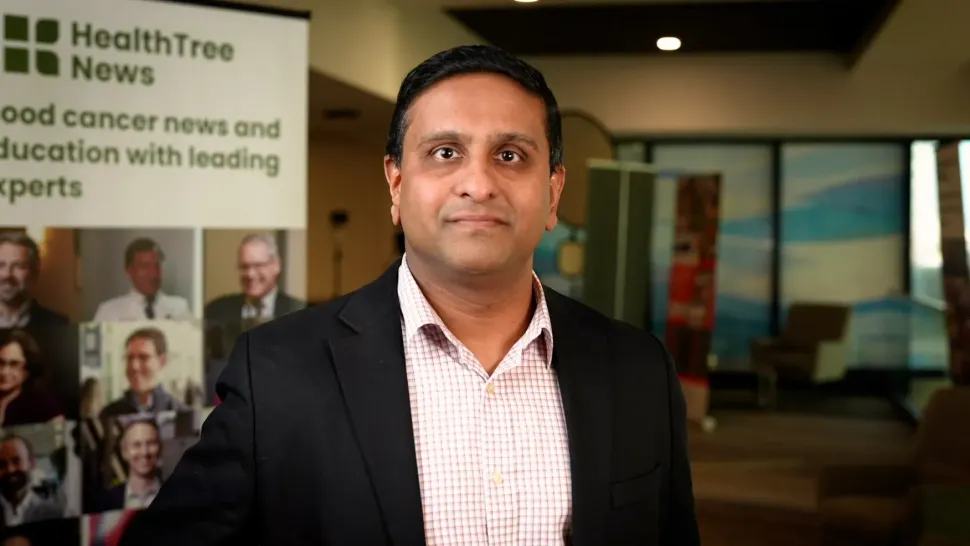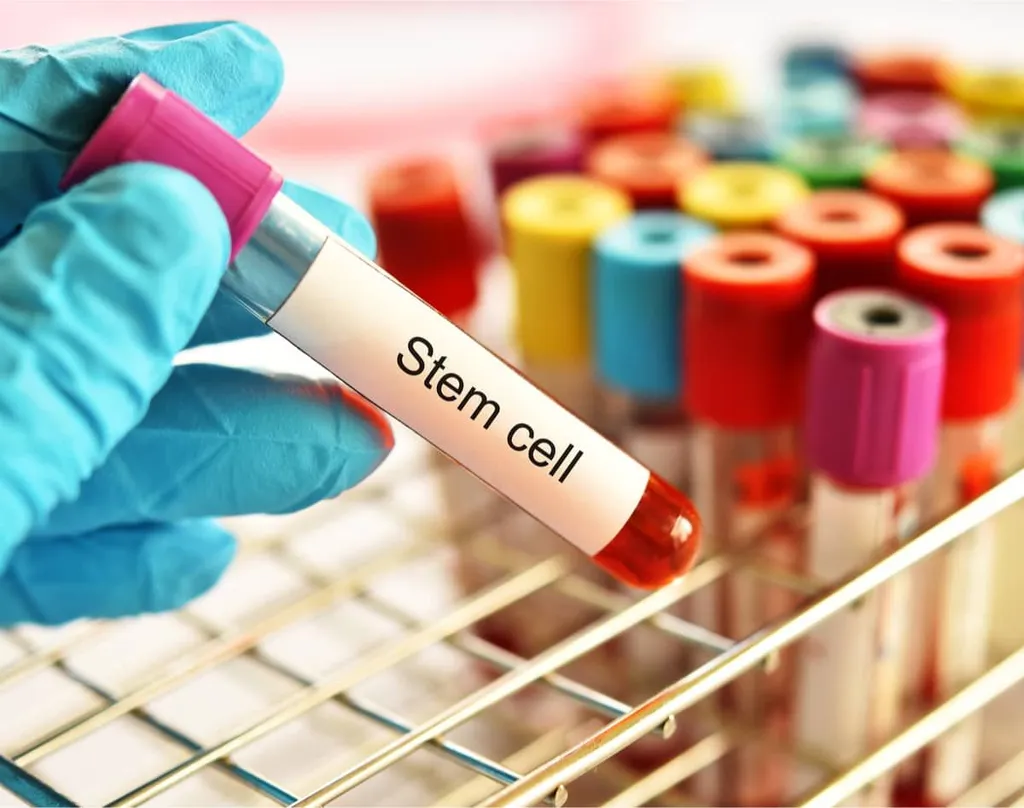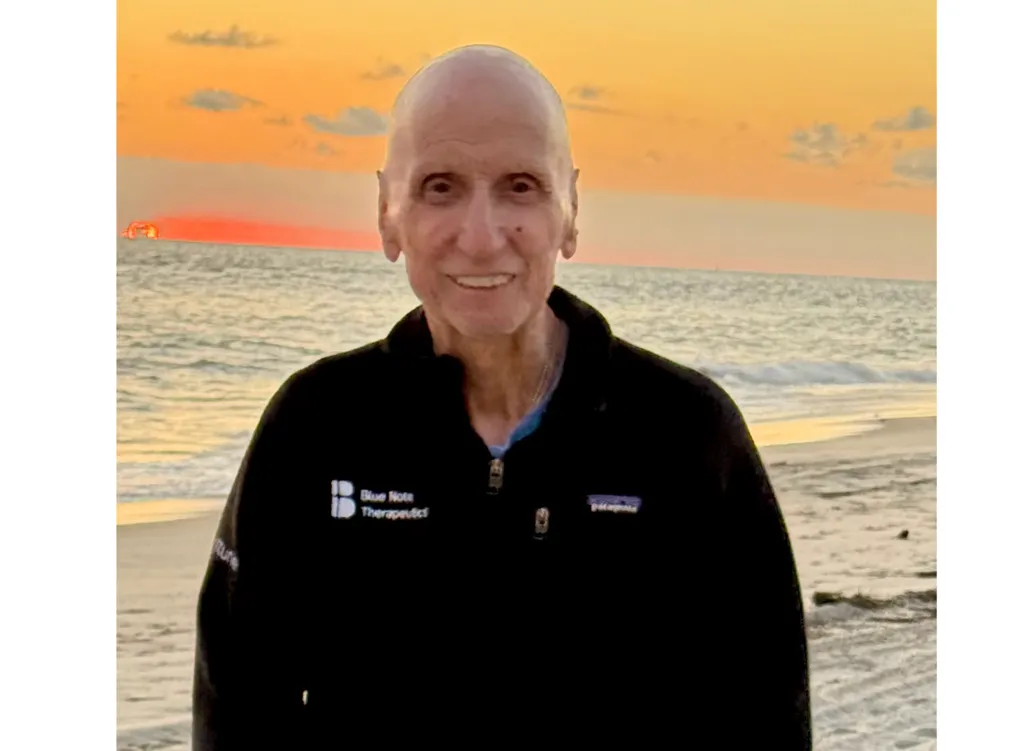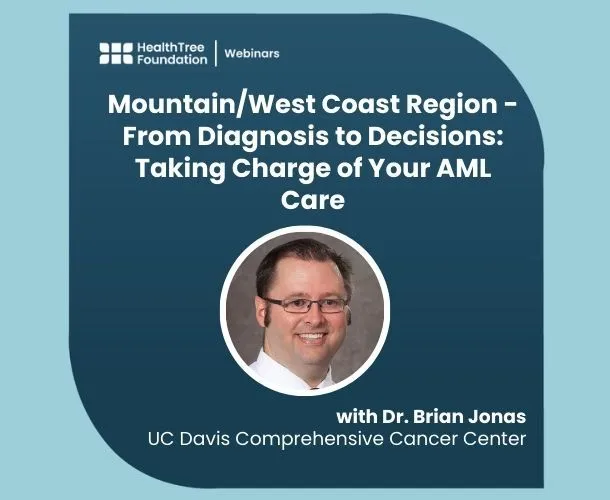ASH 2023: Venetoclax + CLAD Combo for Older AML Patients

Dr. Tapan Kadia, an AML specialist and professor from MD Anderson Cancer Center shared research findings at the ASH 2023 conference about how the treatment combination cladribine (Mavenclad), low-dose cytarabine, and venetoclax (Venclexta) is helping newly diagnosed elderly AML patients achieve high and prolonged remission rates. Watch Dr. Kadia’s interview or read about the study below.
Venetoclax + CLAD Combo for AML
The treatment combination in the study is tailored for newly diagnosed AML patients aged 60 or older, who may not be able to tolerate intensive chemotherapy.
The study results showed:
- 80% of the patients achieved complete remission, meaning AML signs and symptoms were fully reduced.
- Among those who reached complete remission, 80% had negative minimal residual disease. This means that there were little to no cancer cells in the patients’ bone marrow using highly sensitive tests.
- The average amount of time a patient’s life was extended since the start of treatment was 50 months.
- Patients with the following types of AML mutations responded particularly well to treatment: NPM1 mutation, IDH1 mutation, IDH2 mutation, and RUNX1 mutation.
- The RAS mutation group, unfortunately, did not respond well to the treatment combination.
Why is This Important for AML Patients to Understand?
For patients with AML, especially older individuals or those unfit for intensive chemotherapy, these findings represent a significant step forward. It offers hope for effective treatment with manageable side effects, potentially improving quality of life and survival rates in a patient population that has historically had limited options.
Dr. Kadia's optimism about the continuation and follow-up of this study indicates a hopeful direction for AML treatment. The emphasis on detailed genetic analysis to tailor treatments underscores the move towards personalized medicine in AML treatment.
Learn more about the study by clicking here. If you would like to enroll in the study, click on “begin now,” and HealthTree’s patient navigator team will help you with the enrollment process.
Interested in Accelerating Research? Join HealthTree Cure Hub!
Are you interested in accelerating research toward a cure for AML? We have created a powerful patient data portal named HealthTree Cure Hub for this very purpose. We invite you to join the 12,000-and-counting blood cancer patients who are collaborating with specialists through research surveys and studies in HealthTree Cure Hub. YOU are the key to improving AML care. We are grateful for your time and support in helping us progress toward an AML cure. Create your free HealthTree Cure Hub account by visiting the link below!
Dr. Tapan Kadia, an AML specialist and professor from MD Anderson Cancer Center shared research findings at the ASH 2023 conference about how the treatment combination cladribine (Mavenclad), low-dose cytarabine, and venetoclax (Venclexta) is helping newly diagnosed elderly AML patients achieve high and prolonged remission rates. Watch Dr. Kadia’s interview or read about the study below.
Venetoclax + CLAD Combo for AML
The treatment combination in the study is tailored for newly diagnosed AML patients aged 60 or older, who may not be able to tolerate intensive chemotherapy.
The study results showed:
- 80% of the patients achieved complete remission, meaning AML signs and symptoms were fully reduced.
- Among those who reached complete remission, 80% had negative minimal residual disease. This means that there were little to no cancer cells in the patients’ bone marrow using highly sensitive tests.
- The average amount of time a patient’s life was extended since the start of treatment was 50 months.
- Patients with the following types of AML mutations responded particularly well to treatment: NPM1 mutation, IDH1 mutation, IDH2 mutation, and RUNX1 mutation.
- The RAS mutation group, unfortunately, did not respond well to the treatment combination.
Why is This Important for AML Patients to Understand?
For patients with AML, especially older individuals or those unfit for intensive chemotherapy, these findings represent a significant step forward. It offers hope for effective treatment with manageable side effects, potentially improving quality of life and survival rates in a patient population that has historically had limited options.
Dr. Kadia's optimism about the continuation and follow-up of this study indicates a hopeful direction for AML treatment. The emphasis on detailed genetic analysis to tailor treatments underscores the move towards personalized medicine in AML treatment.
Learn more about the study by clicking here. If you would like to enroll in the study, click on “begin now,” and HealthTree’s patient navigator team will help you with the enrollment process.
Interested in Accelerating Research? Join HealthTree Cure Hub!
Are you interested in accelerating research toward a cure for AML? We have created a powerful patient data portal named HealthTree Cure Hub for this very purpose. We invite you to join the 12,000-and-counting blood cancer patients who are collaborating with specialists through research surveys and studies in HealthTree Cure Hub. YOU are the key to improving AML care. We are grateful for your time and support in helping us progress toward an AML cure. Create your free HealthTree Cure Hub account by visiting the link below!

about the author
Megan Heaps
Megan joined HealthTree in 2022. She enjoys helping patients and their care partners understand the various aspects of the cancer. This understanding enables them to better advocate for themselves and improve their treatment outcomes.
More on Conferences
Trending Articles

Get the Latest Acute Myeloid Leukemia Updates, Delivered to You.
By subscribing to the HealthTree newsletter, you'll receive the latest research, treatment updates, and expert insights to help you navigate your health.











